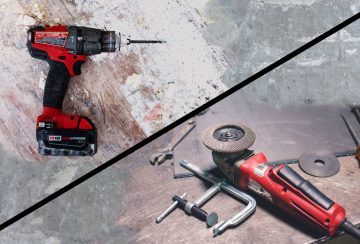Battery Operated Power Tools

Battery Operated Power Tools
- September 21, 2021
- Posted By Douglas Wilson
Battery Operated Power Tools is a great way to simplify your work. You don’t have to worry about recharging or worrying about running out of juice when you use one. Also, the battery will last much longer. This saves you money and time.
Lithium-Ionic batteries are commonly used in cordless battery operated power tools because they are more durable than nickel-cadmium or nickel-metal hydride. They also run longer than the other cordless power tools as well. One downside to cordless tools is they can be somewhat expensive than their corded alternatives. If you plan on using the tool heavily then this may not be a good choice for you.
Nickel Cadmium is a type of battery that is safe to use with cordless battery operated power tools and other heavy duty electrical equipment. It is also safe for household electrical outlets. Nickel-metal hydride cells, which are commonly referred to as NiMH, are another option. These cells do not produce harmful emissions. The problem with these cells is that they tend to be rather expensive. This makes them a poor choice for household use unless you have plenty of money to burn.
Cordless drills have many advantages over corded power tools, but they do have some disadvantages as well. First, a drill requires an electrical outlet in order to work. Second, constant recharging is necessary to keep the drill’s tip spinning at maximum speed. Also, you have to remember to change the screws every so often because if you don’t, the drill bit could eventually break. Finally, using a corded power tool can make your home cleaner because it doesn’t release fumes and other emissions that a cordless power tool releases.
The cordless switch in a drill has a few advantages over the rechargeable drill head. First, you don’t have to worry about being near an outlet while using one of these cordless power tools, which means you can take them anywhere. Also, the cordless switch is usually easier to use than the rechargeable head. You simply pull off the plug and start turning the handle. In contrast, the rechargeable drill requires you to remove the battery, plug it back into the wall, then insert the battery into the socket and start the process all over again.
The only disadvantage of corded drills is noise. You will notice this when you first get the drill out of the box and you hear the little motor working. This is a normal noise and will wear off after a few uses. Also, the cord can tangle, resulting in an inconvenience when trying to hold the drill bit tip tight against the work surface. The best corded drill for indoor use is one that has a small lip on the plug end, which allows the cord to grip the work surface more firmly. These types are much quieter, but you should still test a corded drill with a screwdriver before using it on wood.
Cordless drills are ideal for interior use. However, they do lack power when drilling in tough dirt or sand. The drill will also run out of batteries if the run is unplugged for too long. These power tool batteries come with limited life warranties. If you do not use the tools often, buying a new one every couple years is a good investment. For outdoor use, choose drills that have a lot of torque so you can drill quickly and easily.
If you plan to purchase a drill, battery and cord combination is a good idea. This way you do not need to carry several extra batteries around. You can buy kits that include the drill, battery and charger. Look for these combos in stores that sell power tools that work together.
Is there anything more frustrating than knowing you could complete a job if only you had the right tools? Our battery operated power tools drills are designed to deliver the power you need to tackle any job day after day.